YOGA
Good guys and girls from steemit today I come to share an interesting topic to understand with
fullness that is yoga, its types and how the different practices of yoga are systematized, in addition to a little
of history about it. It should be noted that everything is possible with the power of the mind, you can use it
for or against, but first there is little information that will clarify many things about yoga

First of all, what is yoga? Yoga comes from Sanskrit yoga ‘union’, it refers to a traditional
physical and mental discipline that originated in India. The word is associated with meditation practices in
Hinduism, Buddhism and Janaism; The etymology of the Spanish word «yoga» comes from Sanskrit yoga, which in turn comes from the verb yuj- (in AITS): which means placing the yoke [to two oxen, to join them], concentrating the mind,
absorb in meditation, remember, unite, connect, bestow, among others. The verb yuj- is a cognate of
the same Indo-European root of the Castilian terms "yoke" and "conjugal."
According to its practitioners, yoga gives as a result:
-The union of the individual soul with the divinity (Brahman, Shiva, Visnú, Kali, etc.), among those who have a
religious posture of devotional type.
-The perception that the self is spiritual and not material, among those who have a spiritualist posture.
-The physical and mental well-being, among those who have a rationalist (atheistic or agnostic) posture.
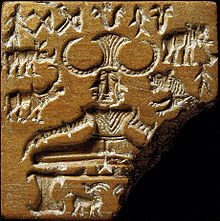
Photograph of the book Mohenjo Daro and the Indus Civilization (by British archaeologist Sir John Marshall;
London, 1931) showing a soapstone stamp from 1600 BC. C. You can see the image of a person
Sitting on a low table. Marshall believed it could be the Indian god Shivá sitting in meditation,
reason why he affirmed that yoga had been created in the II millennium a. C
History of yoga goes hand in hand with the British archaeologist Sir John Marshall discovered in Mohenjo-Daro (Pakistan) a stamp with figures, referring to the 17th century BC. C., of the Indus Valley culture. In 1931 he published his interpretation, imagining a supposed anthropomorphic creature with horns, in a sitting position with his legs
crossed. Marshall developed four hypotheses, not yet confirmed:
-The seated man would be the Hindu god Shiva.
-As it is surrounded by a rhinoceros, a cow, an elephant, a tiger and a deer, Marshall said that
it was about Shiva as "Pashupati" (‘lord of the beasts’) and with that name he baptized the seal.
-The male - sitting cross-legged - would be practicing a yoga posture
Therefore yoga would be at least 35 centuries old. Other Western writers, including the historian of religions Mircea Eliade (1907-1986), and Georg Feuerstein, believed that this proposition was sufficient proof that yoga was known in the Indus culture. It is really unknown if a person portrayed on a label, sitting cross-legged, is practicing "a primitive form of yoga" (Feurstein, 1979).
Instead, the Hinduists argue that yoga is eternal (anādi: ‘without beginning’) and always existed. At
Hinduism, it is counted as one of its six orthodox doctrines. These doctrines (and their respective
founders or main historical references) are:
-yoga; from Patañjali.
-vedanta; of Vyāsa.
-sankhia; from Kapilá.
-purva mimamsa; from Jaimini.
-niaia; from Gautama Akshapada.
-vaisesika; of Kaṇāda.
there is a variation between the types of yoga; followers of the different doctrines of India argue that the various paths lead to the same end. Generally the follower of a type of yoga believes that the only yoga (method of union or
approach to God) is their own, and despises practitioners of other types of yoga.
For example, the gñanis (sometimes called "gñana-yogis") want to merge into the existence of the Absolute
(like a drop in the sea). For the gñani, the goal of bhakta, of being "with" God would mean that the soul
It is still covered by the veil of maya, which makes him believe himself different from God.
And for the bhaktas (sometimes called "bhakti-yogis") the goal of the gñani is naraka (hell), because the
Bhaktas want to have a personal relationship with God (two different people: the soul and God).
But The types of yoga that are considered fundamental, taking into account that The denominations
bhakti yoga and hatha yoga do not correspond to fundamental branches or paths of classical yoga and El hatha
Yoga is a part of Rāja Yoga. The fundamental types are;
- the Raja yoga:
Raja yoga (‘regal yoga’ or ‘the king among the yogas’ where rashá: ‘king’) is usually identified with the
astanga yoga described by Patañjali. and contains Eight stages; The Sanskrit text Yogasūtra (‘aphorisms of yoga’) of Patañjali, prescribes adherence to eight precepts that constitute what is called ashta-anga yoga, ‘yoga
of the eight members ’(being ashta:‘ eight ’, and anga:‘ member ’). In this text, Patañjali compiled and
systematized knowledge about these techniques.
These "eight members" are:
-mama (‘bans’):
-ahimsa (‘nonviolence’, sensitivity towards other beings).
-satia (‘veracity’, don't lie).
-asteia (‘don't steal’).
-brahmacharia (‘brahmanic behavior’, although in practice it meant celibacy and study of the Vedás)
-Aparigraja (‘not sticking’ to home, etc.).
-niyama (‘precepts’):
-saucha (‘physical and mental cleaning’)
-santosha (‘complete satisfaction’).
-caps (discipline, ‘consumed by heat’).
-swadhiaia (‘recite the Vedás quietly to yourself’).
-íswara-pranidhana (‘offer yourself to the God Controller’)
-asana (‘posture’): the spine must remain erect and the body stable in a posture
-comfortable for meditation. Hatha yoga focuses on this member.
-pranaiama (‘breath control’; prana: mystical energy present in the breathing air; and yama:
'control').
-pratiajara (‘little to eat’, control of the senses; prati: ‘little’; ahara: ‘eat; it implies the withdrawal of the senses from external objects).
-dharana (‘sustain’; dhara: ‘sustain’; it implies the concentration of the mind in a thought).
-dhiana (‘meditation’).
-samadhi (‘complete absorption’).

- Gnana yoga
Gnana (‘knowledge’) is applied in both sacred and secular contexts. Linked to the term
«Yoga», can refer to learning or conceptual knowledge, and to the highest wisdom, vision
intuitive or gnosis; that is, to a kind of liberating knowledge or intuition. Occasionally, the
Gnana is even equated with the ultimate Reality. the Greek term gnōsis, the Latin cognōscere and the
Sanskrit gnana are cognates of derivatives of the same indeouropean root * gnō (s) -.
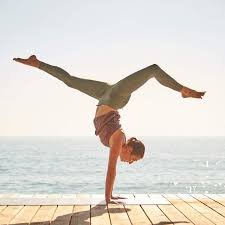
- Karma yoga
Karma yoga, ‘action yoga’ or, rather, ‘service yoga’, is the complete dedication of
activities, words and mind to God. Karma yoga is not the activity dedicated to good. According to him
Hinduism, good works (good karma) do not lead to God, but to a next reincarnation in
better living conditions; while sinful activities (bad karma) lead to a
reincarnation in worse living conditions. Karma yoga does not produce material reactions, but
it frees the soul and allows it, at the time of death, to return to God.
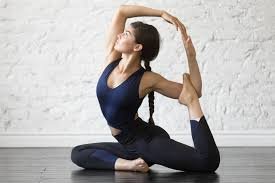
Other characteristics associated with yoga Depending on the school of yoga, a series of systems is created to apply that art to peace between oneself and the universe. Some of those schools are:
-Hatha yoga
Hatha yoga is the most widespread yoga in the world, and is known for its asanas (or positions
bodily) It is a system of physical postures whose purpose is to make the body fit
for meditation Asanas generate physical and mental serenity; in such a way that a devout yogi
You can sit for several hours in a meditation posture without fatigue or restlessness. One of
its main asanas is padmāsana (or ‘lotus position’) and the “salute to the sun” (Suria namaskar).
On the other hand we have the shat karma, a set of purifying bodily practices, called kriyas,
being the best known:
-yala neti: cleaning the nasal pharyngeal tract with salt water.
-sutra neti: cleaning of the nasal pharyngeal tract using a wax-hardened cord.
-Jrid dhauti: throat cleaning by a very long piece of cloth, usually linen or muslin.
One end is swallowed until it reaches the stomach.
-nauli: stomach cleansing by a series of rotational abdominal movements.
-kunyar: cleansing of the stomach by vomiting caused by previously ingested salt water.
-agnisar: stomach cleansing by a series of rapid abdominal movements of type
expansion-contraction.
-kapala bhati: purely diaphragmatic breathing where exhalation is forced and active, while
that the inhalation is slow and passive.
-basti: rectal enema.
Finally, teach pranaiama, a word that comes from prana (life force) and ayama (liberate).
It consists of a set of respiratory practices aimed at purifying the nadis (channels of
life force, similar to taichi meridians) and awaken the different pranas of the subtle body, or vaius
(winds), by merging with the help of bhandas (closures), prana vayu (prana that governs
the thoracic region) and the apana vayu (prana that governs the pelvic region), resulting in awakening
of the central sacred power, called kundalini, by ascending it through the central sushumna nadi. This
The latter leads the yogi to states of ecstasy and union with the divine.
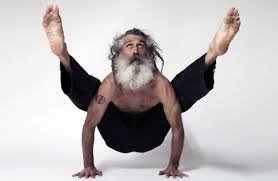
- the Bhakt
Bhakti is devotional yoga. The difference with karma yoga is very subtle: although both types of
Practitioners dedicate their activities to the Absolute, devotion practitioners (bhaktas) are interested in
a more esoteric knowledge of the nature of God (in his personality as Krisna) and of his
activities, coming from puranesque writings, especially from Bhagavata-purana (11th century AD).
Bhakti was popularized in the 1970s by the Hare Krishna movement.
- the Ashtanga vinyasa yoga
Ashtanga Viniysa Yoga is a yoga system based on the text Yoga Korunta.This yoga school attempts to incorporate the eight traditional branches of yoga (known as ashtanga-yoga) as set forth by Patanyali in its Yoga-sutras. Emphasize viniase (movement synchronized with breathing) by a progressive method of series of postures with a specific breath (uyáii pranaiama).
According to its adherents, this practice produces internal heat and abundant sweating. This heat purifies the
muscles and organs, eliminates toxins and allows the body to reconstitute. This method requires
a lot of elasticity and muscular strength, and is recommended for those who wish to lose weight and
Increase your strength and elasticity.
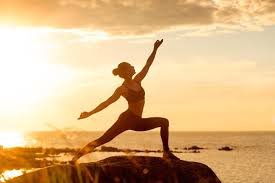
- the Kriyá yoga
Kriyá yoga was popularized in the West by Paramahansa Yogananda in his book Autobiography of
a yogi According to this author, yoga kriiá accelerates spiritual evolution and generates a deep state of
the tranquility. The techniques of kriyá yoga were popularized by yogi Lajiri Majashaia. It would be
in a mystical form of pranaiama, that is, the control of respiratory energy.
The Sanskrit word kriiá means: action, realization, occupation, business, work, labor (according to the Katiaiana-shrauta-sutra and the Laws of Manú). physical action, limb exercise (according to lexicographers such as Amarasimja and Jemachandra). judicial investigation (by human means, such as witnesses, documents, etc.). atonement of a fault, action (like the general idea that can be expressed with a verb).
According to the doctrines of yoga, the kleshas are:
-avidiá: ignorance
-Amit: selfishness
-raga: desire
-duesha: hate
-abhinivesha: tenacity for worldly existence.
Through the calm breathing of kriyā yoga, the heartbeat quiets. As a result, the
vital energy is disconnected from the five senses and the mind then acquires the conscious state of
pratiajara, that is, the withdrawal of the senses of external objects (being prati: ‘little’ and ajara:
'eat').
- the Kundalini yoga
It was introduced in the West in the seventies by Yogi Bhajan. Kundalini yoga includes asanas
(postures), pranaiama (breath control), chanting of mantras, mudras (ritual gestures) and kriyās
(exercises) [10] It is an Ashtanga Yoga. The poses are simple and sometimes accompanied by a dynamic breath, known as "fire breathing." It does not require a great physical form and its practice generates peace of mind and vitality. It works on the osteo-muscular, circulatory, glandular, nervous, respiratory and
digestive.
Kundalini Yoga includes several aspects, among others:
-Coordination between movement and breathing.
Combine static postures with dynamic postures.
-Mental concentration in the movement.
-The control of the flow of breathing during practice.
-The relaxation during and after each exercise.

- the Yoga Nidra
Nidra yoga is the dream state in which you fall during meditation, according to the writer
Anandmurti Gurumaa, yoga nidra is a state of consciousness that lies between wakefulness and sleep
deep. It is a state in which the body stays relaxed and the mind is aware of the world.
inside. Nidra yoga is also known as lucid dreaming.
One of its greatest exponents is Satiananda Saraswati, when he lived with his guru Swami Sivananda in
the city of Rishikesh (India). The concept of yoga nidra comes from an unrelated concept, which is the y yogic dream ’of the god Visnú.
To lead a full life, three needs must be met: physical need (health and activity),
the psychological need (knowledge and power) and the spiritual need (happiness and peace). When the
three are present, there is harmony. Yoga is a practical wisdom that encompasses every aspect of being
of a person. Teach the individual to evolve through the development of self-discipline. The Yoga
It is also defined as the restriction of emotions, which are seen as mere fluctuations (vṛitti)
of the mind. The followers of Hinduism distinguish between the soul (impassive, emotionless) and the
mind (always fluctuating and full of anxieties. I found it interesting to talk about this subject and
To be able to synthesize this topic for your greater understanding and practice.
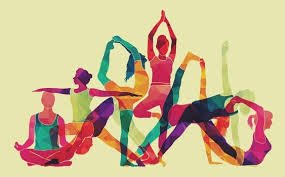
Námaste
Hey there @arianaguillen, welcome to STEEM. If you join @schoolofminnows, you can receive votes for free.
1. Your post will appear in post-promotion on the discord.
2. Your posts will also get featured on the school of minnows account on steem
https://steemit.com/@schoolofminnows
3. You get votes from other members.
4. The whole thing is FREE.
To join follow this link:
https://steem.host/connect/steempunks